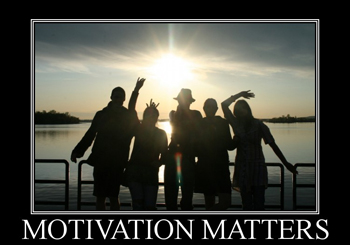
Have you ever known someone who could immediately make friends with anyone? You know they type. They can build instant rapport and it doesn’t matter about race, age, or gender. They can walk into a room and befriend everyone from a priest, a mechanic, and the CEO. Afterward you are scratching your head wondering…how did they do it?
In most cases it is because they have mastered several key skills. Sometimes it is something they learn naturally. For most people they have just spent the time improving their skills.
There are four basic personality styles that vary based on the type and amount of information needed to make a decision. Pragmatics and analyticals base decisions on facts and data while amiables and extroverts make decisions based on emotion and feelings. Pragmatics and Extroverts need just enough information to make a decision (and no more!) while analyticals and amiables just can’t get enough.
You can learn more about personality styles in my article Mastering the four personality styles.
 Brandt Smith is a sales, marketing, public speaking, and professional development expert. Learn about achieving wealth and life balance through entrepreneurship at Wealth and Wisdom, where he is cofounder and senior editor. Their advice on wealth building, personal development, and life balance can help take you to the next level. You can also read more of his thoughts on his blog.
Brandt Smith is a sales, marketing, public speaking, and professional development expert. Learn about achieving wealth and life balance through entrepreneurship at Wealth and Wisdom, where he is cofounder and senior editor. Their advice on wealth building, personal development, and life balance can help take you to the next level. You can also read more of his thoughts on his blog.
Category: People & Relationships

“You must be the change you wish to see in the world”- Mahatma Ghandi
This morning a dear friend, I’ll call Gail, called to tell me the results of a conversation she just had with a friend who is also a business colleague. They’ve known each other for years and used to do business together until a year ago when their relationship hit some bumps that didn’t get resolved.
Gail has a wonderfull attitude when it comes to working through problems. While many people look at conflicts as negative experiences to be avoided or have expectations of them becoming arguments that end poorly, Gail pursues conversations with an open and loving heart.
Whenever she experiences conflicts with others, her first step is to look within herself for answers. She’s been on a quest for spiritual enlightenment and personal growth for many years and has come to believe that the people who push our buttons serve us to grow in many ways. She consistently looks at how she shows up with people and takes 100% responsibility for who she is and what she does. She says, ” My friend is really working for me!” Looking at her expectations, beliefs, attitude, past hurts, and desires helps her to gain clarity about what we wants for herself. She’s then able to expand her viewpoint to a higher truth in creating a different reality.
Instead of reacting to her friend by taking things personally, Gail approached the conversation with compassion, empathy, and curiosity.
Her intention was to hear what her friend was thinking and feeling without trying to fix anything, defend her point of view, or make anything happen to rebuild their friendship. Her desire was to show up authentically, take responsibility for herself, and invite whatever healing might be possible between them without any attachment to the outcome.
In their conversation, Gail was able to hear and sense the fears and concerns her friend was experiencing and respond with love and appreciation.
Three ways we get “hooked” into reacting to people and situations
1. We make assumptions. We unconsciously react believing we understand what is happening. Assumptions can become an automatic conditioned response based on past experiences and what we believe is true. Have you ever heard the word assume broken down? When you assume, you make an “ass of u & me”. Words, phrases, beliefs, and perspectives mean different things for each person. When you assume you know what the other person means, thinks and feels, you can only know what anything means for you, not them. Some people are afraid to ask questions because they worry about looking dumb or think they should know what the other person wants. Making assumptions that are off the mark can create a lot of stress and pain. Be open to realize you might not know something! Be willing to ask for clarity so that you can eliminate assumptions that might cause conflicts and misunderstandings. Communication is an important element in fostering trust and building deeper connections.
2. We take things personally. We can feel invalidated, disrespected, attacked, unheard…The truth is that most of the time, if not all of the time, the things we take personally have nothing to do with us. Our reactions stem from the beliefs and insecurities we have about ourselves, others, and the world. As a psychotherapist and coach, I have found that personalizing is one of the main ways people experience conflicts in relationships causing many misunderstandings and hurtful feelings.
And, when your self-care is off (your life is out of balance), the tendency to overreact, become irritable, defensive, and take things personally becomes much stronger and likely to occur. That’s usually a signal to me that I’m out of alignment and need to do some things to nurture myself!
Compassionate detachment is a skill that is mastered. It is the ability to step into the position of an observer to the experience, like watching a movie and being fully engaged with the story without becoming the story. Being able to come into conversations in a charge neutral space takes practice and personal growth.
3. The delivery of the information or experience feels uncomfortable, bad, offensive.. I have often heard people say they the main problem they have with another person is not what they said, it was how they said or did something. While you are not 100% responsible for how people interpret what you say and do and what they create for themselves, you are responsible for how you show up for people. Hey – that’s how you work for each other!

Article contributed by Mike Robbins
How often do you not say or do something because you’re worried about how it’ll be perceived? For most of us, myself included, this happens more often then we’d like to admit.
We live in a culture that is starving for authenticity. We want our leaders, our co-workers, our family members, our friends, and everyone else we interact with to tell us the truth and to be themselves. Most important, we want to have the personal freedom and confidence to say, do, and be who we really are, without worrying so much about how we appear to others and what they might think or say about us.
Sadly, however, even though we may say we want to live in a way that is true to our deepest passions, beliefs, and desires; most of us don’t and it’s not that easy. We’ve been taught by our parents, teachers, spouses, friends, co-workers, politicians, the media, and others, that it’s more important to be liked and to fit in than it is to be who we truly are. In addition, many of us assume that who we are is not good enough and therefore we’re constantly trying to fix ourselves, or to act like others who we think are better than us.
However, as the famous 19th century author and poet Oscar Wilde so brilliantly stated, “Be yourself, everyone else is already taken.”
What It Really Means to Be Authentic
Authenticity is about enjoying a new sense of freedom to be who we really are–ourselves, natural and without a mask in our relationships, our work, and our life. It takes courage, commitment, and depth to:
– Look within ourselves
– Tell the whole truth (even when we don’t want to)
– Be vulnerable
– Admit, own, and share our true thoughts, feelings, desires, insecurities, passions, embarrassment, dreams, and more.
However, being open and real about all of these things (and more) is what it means to be authentic in life.
Five Principles for Being Your Authentic Self
In order to utilize the power of authenticity in your life as a way to enhance your relationships, increase your fulfillment, and empower yourself, here are five key principles:
1) Know Yourself – Make a commitment to your own personal growth. Discover more of who you are. And, seek out and allow the support, honest feedback, and guidance of others.
2) Transform Your Fear – There’s nothing wrong with having fear, it’s the resistance and denial of fear that is the real problem. When you admit, own, feel, and express your fear, you have the ability to move through it, transform it, and utilize its power in a positive way. Taking action in the face of fear is courageous and empowering.
3) Express Yourself – Have the courage to speak your truth boldly. Deal with conflicts directly. Express your emotions fully. Be vulnerable and real about what you think and how you feel. While on the surface you may worry that this will be seen as “weak,” in actuality expressing yourself completely gives you access to real freedom and power.
4) Be Bold – Live, speak, and act with courage, passion, and truth – even if it’s difficult or scary. Go for what you want in your work and in your life. And get back up when you fall down, which you will.
5) Celebrate Who You Are – Appreciate and honor who you are, what you do, and the gifts and talents that you have. Celebrating yourself is not about being arrogant. It’s an awareness of your own power and it’s the key to self-confidence, fulfillment, and authenticity.
Being your authentic self is not for the faint of heart, but once you’re willing to truly engage and do the work to become more real – your life, your work, and your relationships will be more exciting, meaningful, and fulfilling!
About the Author
Mike Robbins is a best-selling author and personal growth expert who empowers people just like you with more freedom and confidence in their work, in their relationships and in life. Now you can get a FREE Sneak Preview to his NEW book: Be Yourself, Everyone Else is Already Taken (Hardcover, Wiley) and learn how to transform your life with the power of authenticity at: http://www.beyourselfbook.com/about-book.htm

Article Contributed by Roxanne Emmerich
Unmotivated employees have rightly been called “the black holes of the business universe.” Fortunately, motivation is not something a person is born with or without. Applying these Ten Commandments can go a long way to helping existing employees find their motivation.
1. Commit with all thy heart so others might follow
Before you ask your employees to commit, you must be fully committed yourself as a manager and leader of your organization. Throw your heart over the bar, make that complete commitment, and others will follow.
2. Declare a zero-tolerance policy for dysfunctional behaviors
These behaviors include people saying one thing and meaning another, giving lip service, gossiping and backstabbing. Enlist a company-wide commitment to stop every one of these workplace dysfunctions that lead to conflicts and lower employee productivity.
3. Show that you care, in every way
Show your team members that you care, not just about their productivity, but also about them. A kind word or a “good job,” a pat on the back or a question about someone’s health can go a long way toward motivating your employees.
4. Celebrate every victory
Recognition of achievements is high on the list of employee motivators. Every Big Project consists of scores of little victories along the way. Celebration builds confidence, and confident people are open to feedback. This means your employees will be more willing to grow with your company.
5. Clean up thy messes
As a manager and leader, you WILL inevitably make mistakes. It is critical to clean up your messes as you make them. Acknowledge the mistake then make a commitment to make things right and prevent a recurrence.
6. Use powerful and positive language
Say what you mean and communicate your position in a clear and powerful and positive manner. Your ability to motivate employees will be INCREDIBLE when people know what is expected of them and why.
7. Be unreasonable with thyself
Being “reasonable” doesn’t bring out the best of who you are. Show that you are willing to forego the excuses and happily do what needs doing, regardless of how “unreasonable” it seems. Your employees will then rise to the unreasonable themselves.
8. Reprogram thy limiting beliefs
We all come equipped with self-doubting mechanisms. Begin living “as if” you are smart enough, good enough, and up to the challenge, and guess what – suddenly you will be. Once those limiting beliefs fall away, your actual competence increases, which further reduces self-doubt… and places you in a happy feedback loop of motivation.
9. Choose joy
When you develop a habit of interpreting things as good instead of bad, it actually alters the neural pathways in your brain. Your brain will find it easier to interpret things as good. You’ve rewired your brain for happiness—and happy people are MUCH more likely to be motivated and engaged than unhappy ones.
10. Give, Give, GIVE
Life gives to the givers and takes from the takers, and life has a perfect accounting system. If you want your employees to shower your company with success, it’s time for you to dig in and give like crazy to your employees.
Give them your committed heart. Give them a functional environment. Give them care, celebration, integrity, clarity, and a vision of the impossible made possible. Give them a model of life without limiting beliefs. Most of all, show them the way by choosing joy.
Do these things and you will motivate your employees and end up in the Promised Land together.
About the Author
Roxanne Emmerich is renowned for her ability to transform “ho-hum” workplaces into massive results-oriented “bring-it-on” environments. To discover how you can motivate employees, ignite their passion and catapult performance to new levels subscribe to Roxanne’s FREE “Thank God It’s Monday” ezine at http://www.ThankGodItsMonday.com

Article Contributed by Roxanne Emmerich
The dysfunctional workplace is a killer. Untreated it will kill off your customer base, your profits, and your joy for living as surely as anything.
As managers, leaders and top executives within your organization you’ve got to kill the conflicts in your workplace first before dysfunction takes hold.
The Top Ten Workplace Conflicts That Disrupt Organizations – and the Cure for Each
No. 1: No teamwork
The best managers lead a team – not just a group of individual employees. If you have employees at odds and you show no desire to fix it then you are leading your organization to a disaster.
So, make sure that the most direct supervisor meets with those involved in a workplace conflict to learn what it will take to resolve it and to secure a firm commitment to do so. Don’t forget to spell out immediate consequences in the event of failure.
No. 2: Saying one thing and meaning another.
If you have an employee with a pattern of saying, “But what I meant was…”, call them on it. Requiring the offender to have all communications checked for clarity for a period of time usually nips this in the bud fast.
No. 3: Giving lip service to new ideas then undercutting them in private.
You’ll want to enlist everyone’s help in keeping this workplace conflict out. Make it clear that dissenting opinions are welcomed during decision making, but that once a decision is made, undercutting will not be tolerated.
No. 4: Defensiveness at reasonable suggestions.
As a manager, it is your responsibility to let your team know that you consider a willingness to improve to be one of the hallmarks of a person with a bright future in your company. Defensiveness should be viewed as what it is – an unwillingness to improve one’s self.
No. 5: Attraction to chaos.
Pot stirring is a violation of principles and a threat to productivity. Counterbalance the pleasure they get from drama with a greater measure of negative consequences.
No. 6: Not following through on commitments.
Let your team know that they are expected to acknowledge errors and make a commitment to clean up every last bit of the resulting mess.
No. 7: Deflecting blame.
Deflecting blame equals deflecting responsibility. Make it clear that the only acceptable behavior is acceptance of responsibility and (as above) quick work to clean up the mess.
No. 8: People pretending like they “never got the memo.”
If there was no breakdown in the actual system, make it clear that the employee is responsible for consistently accessing internal communications like memos and emails so that he is never again “out of the loop.”
No. 9: Refusing to deal with conflict directly.
Conflict resolution is an essential part of a manager’s job. Performance reviews can and should count disruptive interpersonal conflicts against managers on whose watch they occur.
No. 10: Gossiping and backstabbing.
Once you establish a zero-tolerance policy for talking behind another person’s back, give your people permission to address conflict head-on, out loud, courageously and honestly. And make it clear that giving or receiving gossip is not acceptable.
You may have noticed a refrain coming back again and again in this advice: Make it clear. Once you’ve made the determination to purge your workplace of dysfunctional behavior, your greatest ally and most powerful tool will be clarity. Follow the advice in this article and in my new book “Thank God It’s Monday” and you will terminate all workplace conflicts and improve your organization’s productivity.
About the Author
Roxanne Emmerich is renowned for her ability to transform “ho hum” workplaces into massive results-oriented “bring-it-on” environments. To discover how you can ignite the passion of your employees, catapult performance to new levels, and boost employee morale of your company, subscribe to the Thank God It’s Monday™ e-zine at http://www.ThankGoditsMonday.com